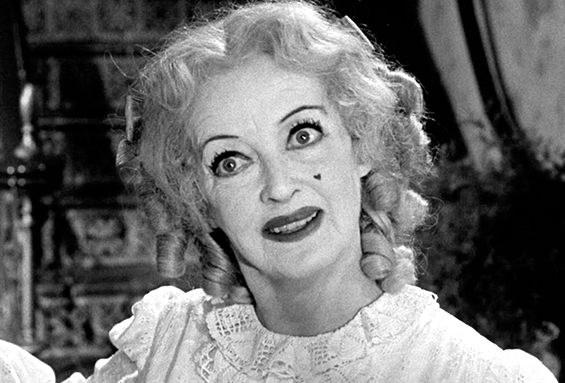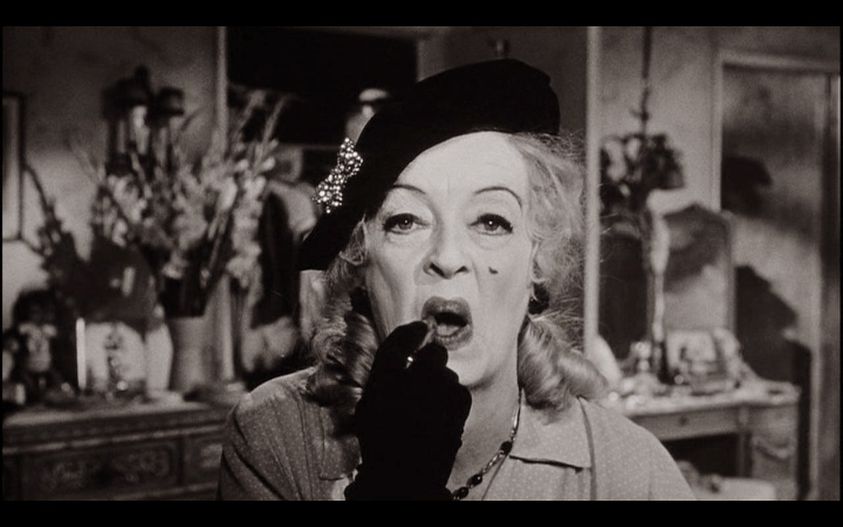“I think acting should look as if we were working a llittle. It’s like the juggler who loses it twice and then gets it, you know, finally. Which is a very old-fashioned theory today?
See, you mustn’t have any idea that anybody knows the camera’s on them at all. You see: it’s just life. Well, we all have life, 24, 12 hours a day, and sometimes we want to forget life, you know. And I think it should be a little larger than life. A little bit theatrical.”
According to Bette Davis in her book “This N’ That,” “What Ever Happened to Baby Jane?” (1962) was originally going to be shot in color. Davis opposed this, saying that it would just make a sad story look pretty. In that same book, Davis said she had a lot of control over how her makeup should be done for the film.
She imagined the older Jane as someone who would never wash her face, just put on another layer of makeup. When her daughter, Barbara Merrill, first saw her in full “Jane” makeup, she said, “Oh, mother, this time you’ve gone too far.”
“What I had in mind no professional makeup man would have dared to put on me,” said Davis.
“One told me he was afraid that if he did what I wanted, he might never work again. Jane looked like many women one sees on Hollywood Boulevard. In fact, author Henry Farrell patterned the character of Jane after these women.
One would presume by the way they looked that they once were actresses, and were now unemployed. I felt Jane never washed her face, just added another layer of makeup each day.”
Davis’ garish makeup made her look something akin to a grotesque version of an aging Mary Pickford gone to seed, and she loved it. She took pride when Farrell visited the set one day and exclaimed, “My God, you look just exactly as I pictured Baby Jane.”

The outrageousness of Davis’ appearance caused some concern for director Robert Aldrich and the producers, who feared it might be too over-the-top. However, as time went on, they came to see that Davis’ instincts for the character were right.
The budget was so limited that the production wasn’t able to use the usual process screen shots for Jane’s driving scenes. Davis did her own driving around Hollywood with cameraman Ernest Haller perched either in the back seat of the car or over the front fender in order to get the shots he needed. “To this day,” said Davis in 1987, “I smile when I remember the first time ‘Jane’ drove down Beverly Boulevard in an old Hudson.
The expressions on the faces of people in other cars when they saw me were hysterical. Lots of mouths dropped.”
Davis’ character of deranged former child star Baby Jane Hudson is widely believed to be based (at least partially) on former silent movie ingenue Mary Miles Minter. Minter’s career ended abruptly in 1922, when press coverage suggested she was a prime suspect in the still unsolved murder of director William Desmond Taylor. Although she was never formally charged, Minter survived for decades afterward, as a progressively delusional recluse.
